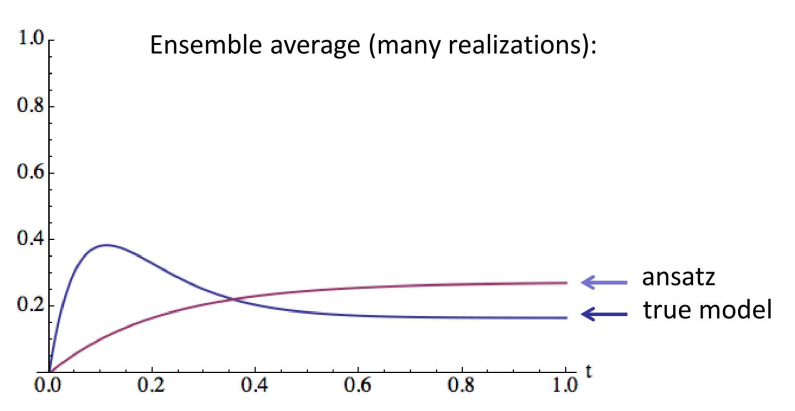An Ansatz is a starting point or basic approach to a problem. In mathematics, it is a statement not based on any formal principle or theory. It’s a guess or approach (especially with reference to an unknown function) that you test; it can also be an additional assumption or piece of information that you add, such as adding a prior in Bayesian statistics.
This educated guess leads to a verifiable result. If you can’t verify the result, you start over.
“If you don’t like the answer, change the question” ~ (Martin, 2004)
The ansatz is a starting point for a more precise solution. It is not necessarily the correct solution, but it can be used to guide the search for a better solution.
Ansatz vs Hypothesis
In some ways, the ansatz is similar to hypothesis testing in statistics: you state a problem, and test your theory. The main difference though is that in hypothesis testing, you’re taking a known hypothesis (something that’s generally accepted as true) and you’re trying to falsify it (i.e. reject the null hypothesis). With an ansatz, you’re taking something you know is probably not true (at least, not when taken as a whole). Then along the way, you tweak it, hopefully leading to a true result. The concept then, is probably closer to priors in Bayesian theory; a prior is a “best guess” about a situation, before you actually have any evidence. Once you gather evidence, the prior gets updated.
When is it NOT an Ansatz?
Let’s say you were trying to find a solution to a differential equation. These equations can’t be solved by a single method, so you could use a guess and check method. If your guess and check results in a solution for the differential equation, then you’ve just used an ansatz. Note though, that your initial guess can’t be based on a known theory or principle. So if you’re following, for example, the separation of variables method, that isn’t an ansatz.
Ansatz Examples

- The Bethe Ansatz is an exact method (developed by Cornell physicist Hans Bethe) for calculating eigenvalues and eigenvectors for a select class of quantum many-body systems. It is a way to solve the quantum inverse scattering problem — a set of equations that describe the scattering of particles in a one-dimensional system. The Bethe ansatz is an ansatz for the wavefunction of the particles, and it has been used to solve a wide variety of problems in quantum physics, including the Heisenberg spin chain and the Hubbard model.
- The coupled cluster ansatz is a method for approximating the ground state of a many-body quantum system. The ansatz is based on a product of exponentials of one-body operators, and it has been used to study a wide variety of systems, including atoms, molecules, and solids.
- The variational autoencoder is a type of machine learning model that can be used to learn the latent structure of a dataset. The model is an ansatz for the probability distribution of the data, and it can be used to generate new data that is similar to the training data.
References
Martin, R. Electronic Structure Basic Theory and Practical Methods. Cambridge University Press, 2004.
Müller, G. “Introduction to the Bethe….” https://aip.scitation.org/doi/pdf/10.1063/1.4822511
Sandia National Laboratories. Statistical modeling for quantum information processing.